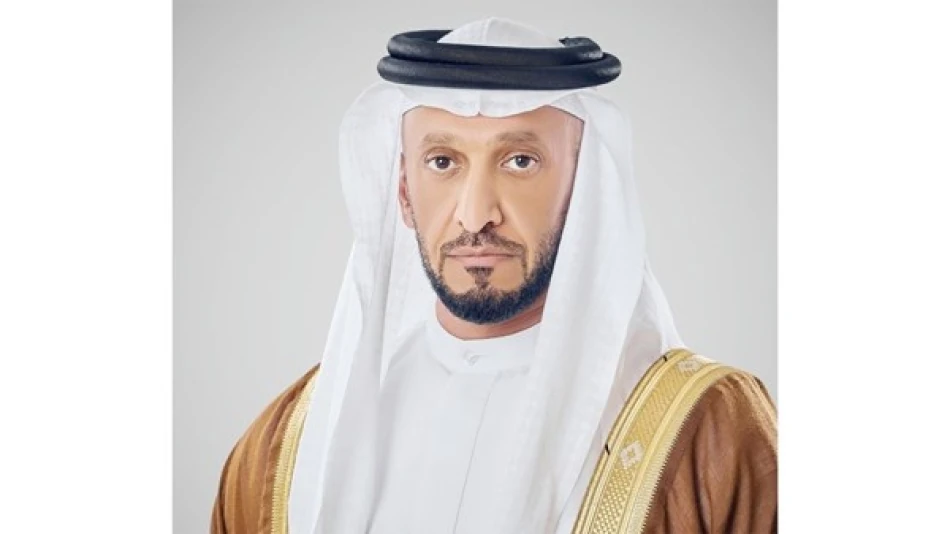
National Media Office Hosts Kuwaiti Information Ministry Delegation
UAE and Kuwait Strengthen Media Partnership Amid Digital Transformation Push
The UAE's National Media Office and Kuwait's Ministry of Information have deepened their bilateral media cooperation, focusing on advanced AI-driven content monitoring systems and preparation for the upcoming Bridge Summit. The partnership reflects a broader Gulf strategy to modernize media operations and counter digital disruption through regional collaboration.
Strategic Gulf Media Integration Takes Center Stage
Abdullah bin Mohammed bin Butti Al Hamed, Chairman of the UAE National Media Office, hosted a high-level Kuwaiti delegation led by Assistant Undersecretary Lafi Al-Subaie at the Abu Dhabi headquarters. The meeting underscored growing recognition among Gulf states that traditional media strategies require fundamental restructuring to remain relevant in an increasingly fragmented digital landscape.
Al Hamed emphasized the importance of Gulf media integration, stating that coordinated efforts would create "more impactful and comprehensive media that reflects human values, respects diversity, and serves communities responsibly." This language signals a shift from purely national media strategies toward regional content frameworks—a departure from historical approaches where Gulf states operated largely independent media ecosystems.
AI-Powered Media Monitoring Gains Traction
The Kuwaiti delegation received detailed briefings on the UAE's advanced media monitoring and analysis systems, which deploy artificial intelligence to track content across multiple platforms, analyze trends, and measure communication impact. These capabilities represent significant technological advancement over traditional media monitoring, which relied heavily on manual processes and limited data sources.
The UAE's investment in AI-driven media analytics mirrors similar initiatives in Singapore and South Korea, where governments have prioritized automated content analysis to maintain information sovereignty. For Gulf states, this technology offers particular value in monitoring cross-border Arabic content and managing narrative consistency across diverse media landscapes.
Bridge Summit Positions UAE as Regional Media Hub
Preparations for the upcoming Bridge Summit featured prominently in discussions, with both sides viewing the event as a strategic platform for media industry transformation. The summit's emphasis on "future media" aligns with the UAE's broader positioning as a regional technology and innovation center, competing directly with Qatar's Al Jazeera network and Saudi Arabia's expanding media investments.
This timing is significant. Regional media markets face unprecedented pressure from global streaming platforms, declining traditional advertising revenues, and changing audience consumption patterns. The Bridge Summit represents an attempt to coordinate regional responses rather than allowing individual Gulf states to compete destructively for limited market share.
Market Implications for Media Investors
The UAE-Kuwait partnership suggests consolidation opportunities in Gulf media markets, particularly for technology companies specializing in Arabic content analysis and automated media monitoring. The emphasis on AI integration indicates substantial procurement budgets for media technology solutions, creating attractive prospects for both regional and international suppliers.
Traditional media companies operating in Gulf markets should note the regulatory implications. Enhanced monitoring capabilities enable more sophisticated content oversight, potentially affecting editorial independence and operational flexibility. However, the partnership also creates opportunities for content sharing agreements and cross-border distribution arrangements.
Digital Disruption Drives Regional Cooperation
The meeting's focus on "accelerating digital transformations" reflects genuine concern about media industry viability. Gulf advertising markets, while still robust compared to global averages, show signs of fragmentation as audiences migrate to international platforms. Regional cooperation offers economies of scale that individual markets cannot achieve independently.
This approach contrasts sharply with the United States, where media consolidation has proceeded through private market mechanisms, or China, where state control operates through centralized rather than collaborative frameworks. The Gulf model suggests a middle path—maintaining national media sovereignty while achieving operational efficiencies through voluntary coordination.
 Layla Al Mansoori
Layla Al Mansoori







